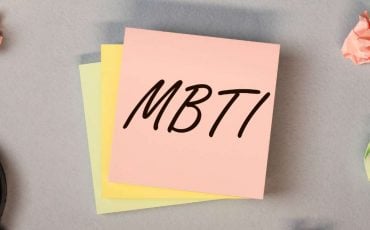Different personality types determine how people behave and act in their daily lives. Personality types control an individual’s actions at home as well as in the workplace.
For several years throughout history, researchers have tried to understand human personalities. In their efforts, different researchers have discovered different techniques to classify human personalities.
Out of those, the most popular classification system used worldwide is the Myers-Briggs personality typing system (MBTI). Another common personality typing system is the Enneagram system. In this article, we will do a comparison between the Myers-Briggs (MBTI) 16 personalities vs. the enneagram personality typing system.
Myers-Briggs 16 Personalities vs. Enneagram Types – A comparative analysis
Researchers started working on personality theories near the end of the nineteenth century. Many famous psychiatrists like Sigmund Freud, Alfred Binet, and others contributed to this. Swiss psychiatrist Carl Jung wrote a book titled “Psychological Types” on this topic in 1921. The English version of the book came out in 1923. This book was a source of inspiration for the American author Katharine Cook Briggs.
Briggs and her daughter, Isabel Briggs-Myers, together developed the Myers-Briggs system of personality typing. They developed a self-report questionnaire that asks people about their personality traits. Today, we know this questionnaire as the Myers-Briggs Type Indicator (MBTI).
This test divides people into 16 personality types based on four dichotomies. Let us have a look at these below:
i. Energy: This indicates how a person energizes themselves. They can do it on their own, or by being around other people. According to that, people can be either extroverts (E) or introverts (I).
ii. Information: This scale denotes how an individual processes information. Some people may choose to focus more on tangible information. Some others may trust their gut feelings more. They try to keep an open mind at all times. In accordance, people may be either sensing (S) or intuitive (N).
iii. Decision: This gives an idea of how people make decisions. These can be small decisions like what to eat for breakfast. They can also be major decisions like important business decisions. Some people rely on logic and facts.
Some others become more invested from an emotional point of view. They make decisions based on how they feel at that moment. In this way, people can either be thinking (T) or feeling (F) type.
iv. Lifestyle: The term lifestyle indicates how a person acts in their daily lives. Some people want everything in their life to be in a proper orderly fashion. They plan and schedule everything in advance.
They cannot stand it if things do not go according to their plan. Some others can be more of whimsical type. They like to go with the flow and make necessary adjustments. Based on this scale, people can be either judging (J) or perceiving (P).
From different combinations of these, experts have formed sixteen different Myers-Briggs 16 personality types.
- ENFJ (extroverted, intuitive, feeling, judging)
- ENFP (extroverted, intuitive, feeling, perceiving)
- ENTJ (extroverted, intuitive, thinking, judging)
- ENTP (extroverted, intuitive, thinking, perceiving)
- ESFJ (extroverted, sensing, feeling, judging)
- ESFP (extroverted, sensing, feeling, perceiving)
- ESTJ (extroverted, sensing, thinking, judging)
- ESTP (extroverted, sensing, thinking, perceiving)
- INFJ (introverted, intuitive, feeling, judging)
- INFP (introverted, intuitive, feeling, perceiving)
- INTJ (introverted, intuitive, thinking, judging)
- INTP (introverted, intuitive, thinking, perceiving)
- ISFJ (introverted, sensing, feeling, judging)
- ISFP (introverted, sensing, feeling, perceiving)
- ISTJ (introverted, sensing, thinking, judging)
- ISTP (introverted, sensing, thinking, perceiving)
So we see that the MBTI classification focuses on people’s behaviors. One can also see that some of these personality types have certain factors in common between them. So, many Myers-Briggs personality types share many similarities with each other. At the same time, each personality type is also different from the others in many aspects.
The Enneagram Personality Typing System
Now let us talk about the Enneagram personality types. The idea behind the Enneagram type of personality classification dates back centuries ago. The modern version of this came into existence in the late twentieth century.
American teacher Don Richard Riso contributed to this, with his friend, Russ Hudson. They developed a questionnaire that divided people based on their 9 Enneagram personality types. They named it the Riso-Hudson Enneagram Type Indicator (RHETI). Riso and Hudson also established the Enneagram Institute in New York, USA. Even to this day, the aim of this Institute is to help advance research about the Enneagram system.
The term Enneagram comes from the Greek language. “Ennea” means the number nine. “Gramma” means something that is drawn. The RHETI or the Enneagram test divides people into nine different personality types.
Experts have numbered them as Enneagram type 1 through 9. One can draw these nine personality types like a map or illustration. This map helps to show how the different personality types are connected to each other. This explains the logic behind the name Enneagram.
We will discuss more the Enneagram vs Myers-Briggs personality types. But, let us first take a look at the Enneagram classification system.
- Enneagram type 1 (the reformer): Rational, idealist, principled, purposeful, perfectionist
- Enneagram type 2 (the helper): Generous, helpful, caring
- Enneagram type 3 (the achiever): Achievement oriented, determined, driven, pragmatic, adaptive, image-conscious
- Enneagram type 4 (the individualist): Self-centred, sensitive, withdrawn, temperamental, emotional, whimsical
- Enneagram type 5 (the investigator): Inquisitive, intense, perceptive, sensitive, innovative, isolated
- Enneagram type 6 (the loyalist): Committed, determined, responsible, anxious, suspicious
- Enneagram type 7 (the enthusiast): Busy, enthusiastic, fun-loving, cheerful, outgoing, versatile
- Enneagram type 8 (the challenger): Enthusiastic, confident, powerful, dominative, decisive
- Enneagram type 9 (the peacemaker): Easygoing, modest, polite, self-effacing, receptive, reassuring, helpful
Each Enneagram personality type has one strong fear and one strong basic desire. This fear and desire together control how each personality type behaves and acts. As is evident, the Enneagram personality types are quite different from each other. But they still have some sort of interconnection with the other types.
Up to now, we have discussed the basics behind both classification systems. Now let us take a look at the strengths and weaknesses of each of the systems.
Strengths and Weaknesses of the Myers-Briggs Personality Classification System
The key point about the Myers-Briggs personality types is that they provide insight into the minds of different people. In simple terms, this allows us to understand other people better.
As a result of this, we can be open-minded and more understanding around others. So, conversations and interactions between different people improve by a large amount. Having an idea of different people’s personality traits also helps avoid conflicts.
At the same time, this system also has some flaws.
- Katharine Cook Briggs and Isabel Briggs-Myers developed this system through clinical observation. They did not conduct any sort of controlled research. So, the Myers-Briggs system does not have any scientific reliability and validity.
- The Myers-Briggs system works on the basis of binary scales or dichotomies. This means that according to this system, a person can be either an introvert or an extrovert. But this does not have to be true in reality.
For example, a person may be proactive and outgoing. At the same time, that person may also enjoy spending time alone. So, in reality, this person would fall in the middle of the introversion and extraversion spectrums. But the Myers-Briggs system has no provision for this.
This is true for the other dichotomies as well. People can be both thinkers and feelers. But the Myers-Briggs system cannot provide this sort of classification.
Strengths and Weaknesses of the Enneagram Personality Typing System
The Enneagram personality classification has many positives. Some of those are:
- The system of Enneagram focuses on people’s deep emotions, fears, and desires. This helps every individual to achieve personal growth. It also helps people become self-aware. Using this information, every individual can become a better version of themselves. It also helps to build emotional connections between different personality types.
- The Enneagram personality classification has nine broad categories. Each of those categories can have two “wings” depending on the Enneagram diagram. The Enneagram diagram has all nine types arranged in a circle in a clockwise manner. So, an Enneagram type 1 can have two wings – a type 2 wing, and a type 9 wing. Likewise, a type 5 can have a type 4 wing or a type 6 wing; and so on. This means that the Enneagram system allows a more fluid classification system.
- Each of the Enneagram personality types can be healthy, unhealthy, or average type. Every person, during stressful times, or when they are struggling to grow and develop themselves, can behave in an abnormal way. They may not be the best version of themselves. So, the Enneagram system allows people to be more aware of them. This also means that when people are in a bad state in life, they can look back on their past selves and strive to be better.
But no system is a hundred percent correct. This applies to the Enneagram system as well. The main flaw of this system is that it is a self-report questionnaire. So, someone may be unsure while answering the questions.
As a result, they may get misidentified as the wrong Enneagram type. Moreover, like the Myers-Briggs system, the Enneagram system also lacks scientific evidence.
Practical Application of the Myers-Briggs and the Enneagram Personality Classification Systems
From the article so far, we have seen that both the Myers-Briggs and the Enneagram systems have certain strengths and weaknesses. It is true that none of them are flawless. But each of them can have good use in some specific settings.
The Myers-Briggs system gives an idea about the personality traits of individuals. They help to provide clues on people’s likes and dislikes. So, having knowledge of people’s personality types comes in handy in social settings.
This can be very useful while making conversations with others. For example, suppose we know beforehand that the person we are talking to hates small talk. So, we would be direct and come to the main point.
Knowing the Myers-Briggs personality type of someone also helps to avoid unnecessary conflicts. For example, suppose we know that someone has an introverted personality type. So, we would not force them to go out and socialize with others.
On the other hand, the system of Enneagram explains personality types from a deep, emotional perspective. The Enneagram system gives an idea about the internal feelings, desires, and motivations of every individual. This is more helpful for introspection purposes. Having an idea of our inner self can help us grow more as a person.
It can also help us become more self-aware. The Enneagram system of personality classification finds usage in self-development and counseling.
Another great application of the Enneagram system can be in relationship counseling. All the Enneagram personality types share some sort of interconnection. Some of these connections are stronger than others. The Enneagram personality types can help to determine the compatibility between two people. This is something that relationship coaches work with.
To Sum Up
In this article, we have provided a comparison between two of the most common personality classification systems. The Myers-Briggs system divides personalities into sixteen different types, based on four dichotomies. On the other hand, the Enneagram system has nine personality types, each of which can have two wings.
The Myers-Briggs system deals with people’s behavior and actions. The Enneagram focuses on their feelings and emotions. We cannot say that one classification system is better than the other. It is true that none of the systems are flawless. But both have specific strengths and weaknesses. As a result, both find specific applications in different contexts.




